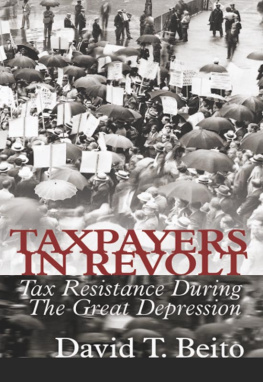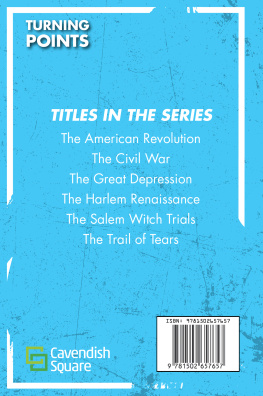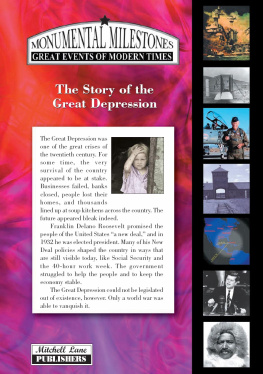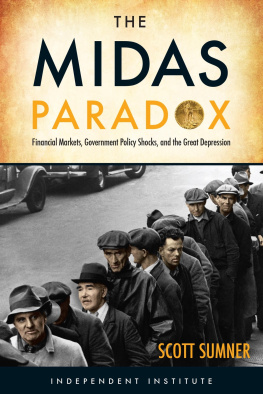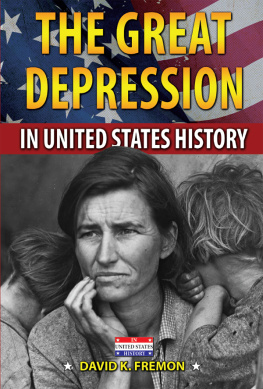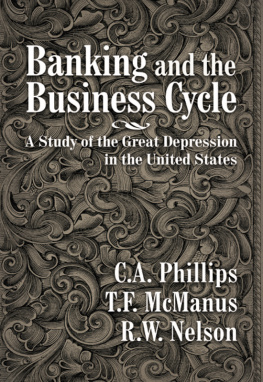David T. Beito - Taxpayers in Revolt: Tax Resistance During the Great Depression
Here you can read online David T. Beito - Taxpayers in Revolt: Tax Resistance During the Great Depression full text of the book (entire story) in english for free. Download pdf and epub, get meaning, cover and reviews about this ebook. year: 2011, publisher: Ludwig von Mises Institute, genre: Politics. Description of the work, (preface) as well as reviews are available. Best literature library LitArk.com created for fans of good reading and offers a wide selection of genres:
Romance novel
Science fiction
Adventure
Detective
Science
History
Home and family
Prose
Art
Politics
Computer
Non-fiction
Religion
Business
Children
Humor
Choose a favorite category and find really read worthwhile books. Enjoy immersion in the world of imagination, feel the emotions of the characters or learn something new for yourself, make an fascinating discovery.
- Book:Taxpayers in Revolt: Tax Resistance During the Great Depression
- Author:
- Publisher:Ludwig von Mises Institute
- Genre:
- Year:2011
- Rating:5 / 5
- Favourites:Add to favourites
- Your mark:
Taxpayers in Revolt: Tax Resistance During the Great Depression: summary, description and annotation
We offer to read an annotation, description, summary or preface (depends on what the author of the book "Taxpayers in Revolt: Tax Resistance During the Great Depression" wrote himself). If you haven't found the necessary information about the book — write in the comments, we will try to find it.
It turns out that the New Deal was not as universally popular as we have been taught. Some 1,500 antitax campaigns in the United States sprang up to resist FDRs looting. Its no wonder historians before Beito completely ignored this great movement!
Here Beito explores its driving force, leadership, ideological basis, progress, and dealings with the press. He shows how the angry taxpayers worked the system to curb tax increases and roll back the taxes in place.
Who knew this sort of resistance was mounted during the Depression?
With roots in the 1920s boom, when local spending and taxes were on the rise, the growing antitax movement gave voice to taxpayers complaints. And as the Depression hit, taxes became an even more crushing burden, and political pressure mounted to repeal them. Governments, however, were strapped for revenue. This dynamic set up a conflict that exploded in protests. Beito deals with how the elites and the government (including large corporations) were able to smear members of the movement as enemies of the people and of society.
The book reads like a novel, complete with a tragic ending that teaches lessons for the future. Without meaning to give away the ending, the tax-revolt movement was brought down by a vast propaganda campaign and the promise of good and better government in the future which the antitax leadership should have seen through.
There truly is so much to learn from this first-class piece of historical research and writing.
David T. Beito: author's other books
Who wrote Taxpayers in Revolt: Tax Resistance During the Great Depression? Find out the surname, the name of the author of the book and a list of all author's works by series.

